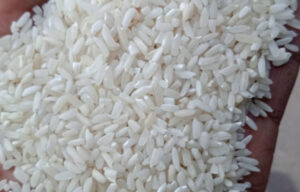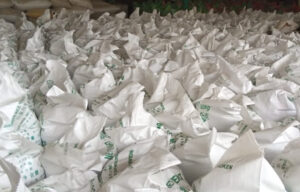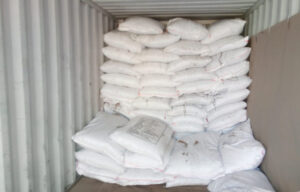Rice
Rice is typically classified or graded based on several factors such as the size, shape, color, and milling process. The following are some of the most common grading systems used for rice:
- Size: Rice can be classified by size, with long-grain, medium-grain, and short-grain being the most common categories. Long-grain rice is typically thin and slender, while short-grain rice is short and plump.
- Shape: Rice can also be classified by shape, with categories such as round, oval, and flat.
- Color: Rice can be classified by color, with white, brown, and black being the most common categories.
- Milling process: Rice can also be classified based on the level of milling it has undergone. For example, “brown rice” is unpolished and retains the outer bran layer, while “white rice” has been polished to remove the bran layer and often undergoes additional processing to create a consistent appearance and texture.
- Broken grains: Rice can also be graded based on the percentage of broken grains it contains, with broken grains indicating a lower quality of rice.

Each country or region may have its own grading system for rice, and the specific criteria for each category may vary based on the type of rice being graded. The grading system is an important tool for ensuring that rice meets the desired quality and market standards.
Rice inspection procedure involves several steps to ensure the quality and safety of the rice being inspected. The following is a general outline of the rice inspection procedure:

- Sampling: A representative sample of the rice is taken from the lot to be inspected.
- Moisture testing: The moisture content of the rice is tested to ensure that it falls within the acceptable range.
- Visual inspection: The rice is visually inspected for any defects such as broken grains, foreign matter, or discoloration.
- Grading: The rice is graded based on its quality, size, shape, and color.
- Paddy separation: Paddy rice is separated from the husked rice.
- Milling: The rice is milled to remove the outer layers and produce white rice.
- Polishing: The rice is polished to remove any remaining bran or impurities.
- Weighing and packing: The rice is weighed and packed into bags or containers for shipping.
- Testing for contaminants: The rice is tested for contaminants such as pesticide residues, heavy metals, and mycotoxins.
- Certification: The rice is certified for quality and safety by a reputable certification agency.
It’s important to note that the specific inspection procedures may vary depending on the country or region where the inspection is being conducted, and the type of rice being inspected.
There are many countries that export rice worldwide. The following are some of the major rice exporting countries:
Argentina
Australia
Brazil
Cambodia
China
Egypy
Guyana
India
Italy
Japan
Myanmar
Pakistan
Paraguay
Suriname
Thailand
Trinidad and Tobago
United States
Uruguay
Vietnam
These countries vary in terms of the types of rice they produce, the volume of rice they export, and the destination markets for their rice. For example, Thailand is known for its fragrant jasmine rice, while the United States is known for its high-quality long-grain rice.
However, according to the Food and Agriculture Organization of the United Nations (FAO), the top five rice exporting countries in 2021 were:
India
Pakistan
Thailand
United States
Vietnam
And the top five rice importing countries in 2021 were:
Bangladesh
China
Iran
Nigeria
Philippines


Broken rice is a by-product of the rice milling process, and is typically used in the production of rice flour, rice noodles, and other processed rice products. It is also used as animal feed in some countries. The export of broken rice is an important source of income for many rice-producing countries, particularly in Asia. The specific ranking of broken rice exporting countries may vary depending on the time period and data source used.
The major broken rice exporting countries are:
Brazil
Cambodia
Guyana
India
Myanmar
Pakistan
Thailand
United States
Uruguay
Vietnam
We offer Indian and Pakistani broken rice of all categories.
For enquiry, please drop us an email and we will revert to you promptly. Top of Form
